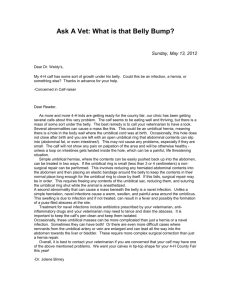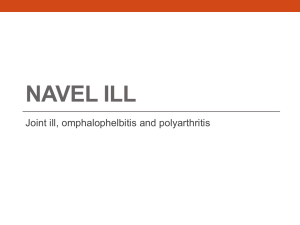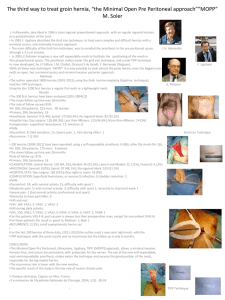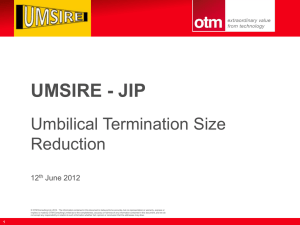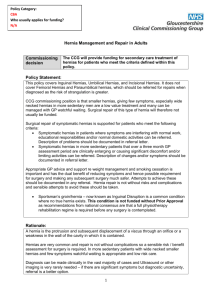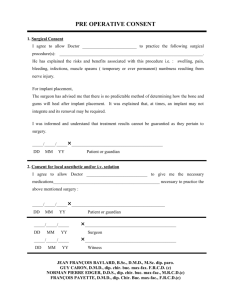Prevent umbilicus issues in dairy calves
advertisement
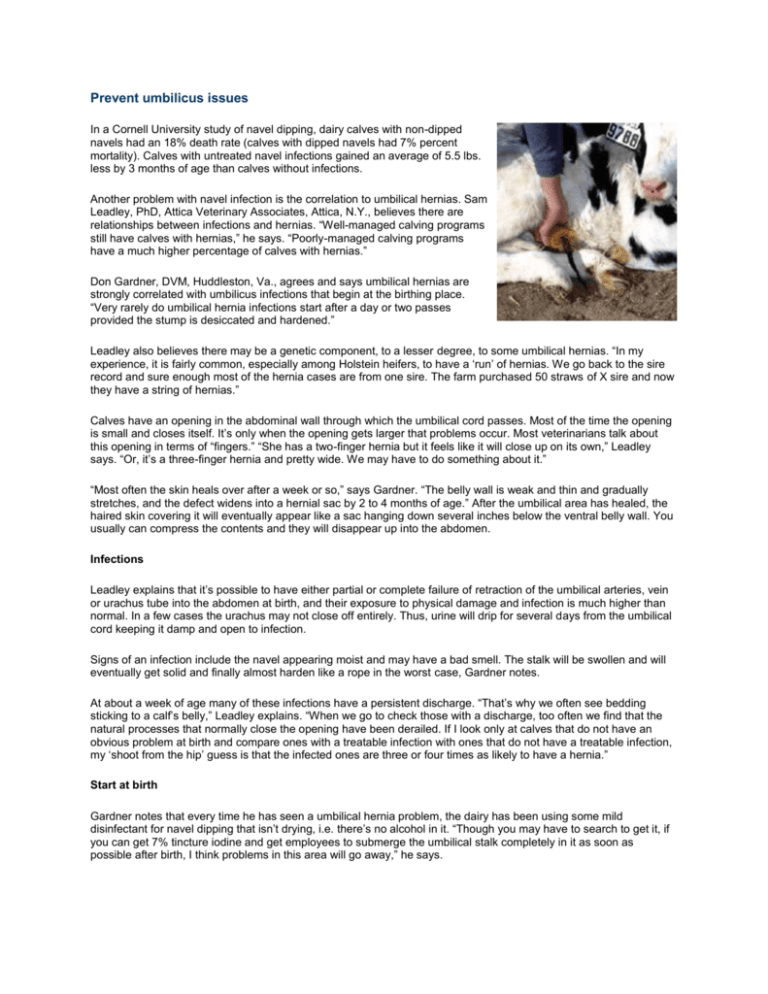
Prevent umbilicus issues In a Cornell University study of navel dipping, dairy calves with non-dipped navels had an 18% death rate (calves with dipped navels had 7% percent mortality). Calves with untreated navel infections gained an average of 5.5 lbs. less by 3 months of age than calves without infections. Another problem with navel infection is the correlation to umbilical hernias. Sam Leadley, PhD, Attica Veterinary Associates, Attica, N.Y., believes there are relationships between infections and hernias. “Well-managed calving programs still have calves with hernias,” he says. “Poorly-managed calving programs have a much higher percentage of calves with hernias.” Don Gardner, DVM, Huddleston, Va., agrees and says umbilical hernias are strongly correlated with umbilicus infections that begin at the birthing place. “Very rarely do umbilical hernia infections start after a day or two passes provided the stump is desiccated and hardened.” Leadley also believes there may be a genetic component, to a lesser degree, to some umbilical hernias. “In my experience, it is fairly common, especially among Holstein heifers, to have a ‘run’ of hernias. We go back to the sire record and sure enough most of the hernia cases are from one sire. The farm purchased 50 straws of X sire and now they have a string of hernias.” Calves have an opening in the abdominal wall through which the umbilical cord passes. Most of the time the opening is small and closes itself. It’s only when the opening gets larger that problems occur. Most veterinarians talk about this opening in terms of “fingers.” “She has a two-finger hernia but it feels like it will close up on its own,” Leadley says. “Or, it’s a three-finger hernia and pretty wide. We may have to do something about it.” “Most often the skin heals over after a week or so,” says Gardner. “The belly wall is weak and thin and gradually stretches, and the defect widens into a hernial sac by 2 to 4 months of age.” After the umbilical area has healed, the haired skin covering it will eventually appear like a sac hanging down several inches below the ventral belly wall. You usually can compress the contents and they will disappear up into the abdomen. Infections Leadley explains that it’s possible to have either partial or complete failure of retraction of the umbilical arteries, vein or urachus tube into the abdomen at birth, and their exposure to physical damage and infection is much higher than normal. In a few cases the urachus may not close off entirely. Thus, urine will drip for several days from the umbilical cord keeping it damp and open to infection. Signs of an infection include the navel appearing moist and may have a bad smell. The stalk will be swollen and will eventually get solid and finally almost harden like a rope in the worst case, Gardner notes. At about a week of age many of these infections have a persistent discharge. “That’s why we often see bedding sticking to a calf’s belly,” Leadley explains. “When we go to check those with a discharge, too often we find that the natural processes that normally close the opening have been derailed. If I look only at calves that do not have an obvious problem at birth and compare ones with a treatable infection with ones that do not have a treatable infection, my ‘shoot from the hip’ guess is that the infected ones are three or four times as likely to have a hernia.” Start at birth Gardner notes that every time he has seen a umbilical hernia problem, the dairy has been using some mild disinfectant for navel dipping that isn’t drying, i.e. there’s no alcohol in it. “Though you may have to search to get it, if you can get 7% tincture iodine and get employees to submerge the umbilical stalk completely in it as soon as possible after birth, I think problems in this area will go away,” he says. Common mistakes are not dipping completely, and as soon as possible, with a strong chemical cautery navel dip such as 7% tincture of iodine. Gardner believes the drying action or effect of the navel dip is as important if not more so than the disinfecting action. “I have consistently seen increases in umbilical hernias when clients have switched to tamed iodine dips,” he says. After dipping the navel, the calf should be moved to a clean dry environment to help guard against the transfer of a variety of pathogens. Leadley’s navel-dipping protocols also include strong tincture of iodine (7%). “Infrequently I see farms where a person has substituted iodine teat dip for navel dip thinking that all iodine solutions are equal.” Incomplete dipping can be a problem. “When I have a live animal for demonstrating I show students how to tip over a calf and check to see that not only the end of the cord was dipped but the entire cord right up to the belly was coated with navel dip,” says Leadley. “I tell them to look for ‘donut dipping.’ That is, much of the cord will get dipped and even a bit of the belly will be stained brown. But, there will be a neat white ring around the cord as it comes out of the belly (the donut).” If pathogen exposure is overwhelming (numbers are too high, length of exposure is too long) even the best of naval dipping protocols is not going to work well, Leadly adds. If they can be applied at birth , the little plastic umbilical clamps are helpful in keeping germs out of the abdominal portion of the stalk. “If they wait three or four hours later, however, I don’t recommend them because they simply trap ascending bacteria up in the umbilicus,” cautions Gardner. Gardner suggests that the calves with swollen umbilical stalks can be helped by injecting a mixture of antibiotics into the center of the core up by the belly and pushing it up and down the stalk core by applying pressure on the syringe plunger. “You are in the right place if it runs out the ventral end of the stalk,” he says. “Put them on the same appropriate systemic dose for a 7–10 days of the antibiotics. If the infections ascend all the way to the liver and create a rope abscess all the way up, they are tough to handle and some become chronic poor doers.” Hernia repair Most hernias don’t need repair. Gardner believes most hernias less than three fingers wide don’t require surgical repair. “I don’t think it is necessary to surgically repair an umbilical hernia unless the opening is wide enough to insert three fingers up into hole in the belly wall,” he says. “Nearly all smaller ones will self close by time they are yearlings.” Leadley notes that veterinarians should palpate the area, assess the size of any pouch that sticks through the abdominal wall, guess whether or not the pouch contains an intestinal loop, how long and wide is the opening, and if present, how bad is the infection. “What you are trying to decide is whether or not steps need to be taken to close the opening or how likely the opening is to close up without intervention,” he says. When Gardner surgically corrects a hernia, he removes the hernial sac and pull the abdominal wall together with multi-filament stainless steel wires to hold it until the linea alba scars into a tough permanent repair. He closes the sutured line again with chromic gut to seal the wall and then does a subcuticular on the sub-cutaneous tissue with gut to prevent seromas from forming, then closes the skin with a long-lasting absorbable suture such as Vicryl. Protocols and compliance When Leadley visits a dairy client he always makes a stop in the calving area. “I look for the navel dip, and equipment such as dip cup, gallon jug, spray bottle. I check to see that it is a tincture of iodine rather than teat dip. I find four or five of the youngest calves and tip them over checking for completeness of dipping — no donuts.” Once in a while Leadley finds contaminated dip such as a teat dipper being used where the solution is in the handle and the dip flows back and forth and in and out of the dip opening. “Some folks use the squeeze-type teat dip bottles and discard any extra dip immediately after the navel is dipped. While that is recommended, some of these bottles get literally caked with dry iodine solution so that the top is just solid brown. I try to get clients to replace these with new ones.” To help clients prevent navel infections, Leadley combines a dipping protocol, training on the protocol and protocol compliance checking. “Make it clear what is to be done,” he suggests. “Show everyone how to do the job correctly. Check periodically to see that there is good compliance. My best farms do all of these in addition to keeping a record for every calf of who dipped the navel and fed colostrum. That is, they make it possible for caregivers to be held accountable for their work.”
